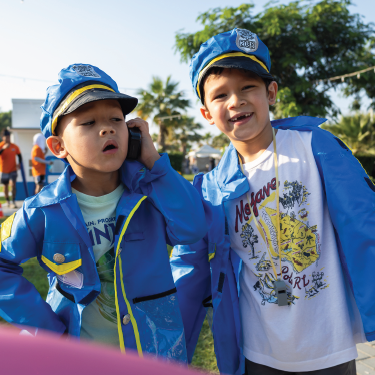
It is important to teach road safety to children from the very beginning because that is the step in the process that will perpetuate a lifetime of safe behavior. With urban areas growing more congested and traffic adding to it, it’s important for children to learn knowledge and skills to navigate roads safely as part of their upbringing. This article is aimed at explaining the numerous benefits of early road safety training for kids, as well as its contribution to the overall development of the kids.
Children are naturally curious, and truly the earliest years are the best years to introduce some of the basics of road safety. By teaching children about traffic signs, pedestrian behavior, and the dangers of inattentiveness, we encourage the awareness instilled in them so they can survive in the world!
Simple lessons like recognizing the significance of a red light or understanding when it’s safe to cross the road can prevent accidents and foster independent mobility.
That is why we are integrating these lessons so young as to enable children to grow up without having to learn road safety as a ‘habit’ later in life.
Road safety training for children helps develop good habits that they will carry with them throughout their lives.
Repeating and reinforcing safety habits, such as checking both directions, crossing when signals are red or green for pedestrians, instills these actions. These are automatic responses over time but help reduce the likelihood of risky behavior. In addition, children who are exposed to road safety ideas at a young age can positively influence other aspects of a child’s behavior, such as attentiveness, patience and responsibility.
Added to that these traits not only enhance their interaction with one another on the road, but also contribute to the development of the character.
It’s not just about memorizing rules, but also about informing children how to make an informed decision.
Children learn to identify safe crossing points, to assess vehicle speed and to react accordingly.
For example, if taught to recognize and respond to zebra crossings and pedestrian signals then the children are given an opportunity to make better decisions about when and where they cross safely.
As well as road safety this ability to assess risk and make calculated decisions is something that spills over into other areas of their lives.
Reduction in childhood accidents is one of the most beneficial aspects of early road safety training.
Global road safety statistics indicate that a significant number of accidents involving children are caused by the lack of awareness or understanding of road rules. This means that parents and educators can decrease drastically the possibility of accidents if they introduce the children to these rules early. nteractive workshops, supervised road simulations and practical lessons on how to navigate streets give children real world experience of how they should handle potentially dangerous situations.
Learning to be road safe enables children to be more confident navigating their environment on their own.
Children trained to walk to school, ride a bike or walk across a busy street feel more secure in their ability to accomplish these tasks without ongoing adult supervision. Independence of this sort is critical to their maturation process, including providing them with an opportunity to become self-reliant, and nurture their willingness to extend their comfort zone responsibly.
Parents also know that their kids know and respects road safety norms, thus can be relieved.
Meaningful parent-child interactions also occur during early road safety training.
Practicing safe cycling at a park or walking to school together with parents helps both parents to share knowledge and to reinforce basic safety lessons in a hands-on way. As it turns out, these shared experiences not only solidify a parent child bond but also provide an opportunity to talk about other safety issues. With age, these open lines of communication become golden opportunities for children to listen to advice and guidance in other areas of their lives.
Road safety training is something that can be filled with different activities that can develop physical and mental growth.
For instance, cycling sessions, or supervised pedestrian drills, are useful for learning safety and improving coordination, balance and focus. Such activities make the child stay active and effectively improve their cognitive skills.
Road scenarios require quick thinking and decision making which improves associated problem-solving abilities.
Conclusion: A Crucial Investment in the Future
It is an investment in children’s wellbeing and the safety of their communities if you teach children about road safety from an early age. Beyond accident avoidance, these benefits are about giving the children knowledge, giving them independence, and inculcating habits that will last a lifetime. All of us, as parents and family members, educators, community members have a part to play in this important process. If we focus on road safety education and make it an exciting part of childhood, it will build responsible, confident, safety conscious children.